CarEdge saved me over 4,500 dollars on a brand new Honda Pilot. I can't say thank you enough.
Price intelligence
Find a wide range of vehicle listings with market insights on new and used listings near you.


Help us personalize your CarEdge experience — it only takes a second.
Your answers help us personalize your CarEdge journey — we’ll follow up with tips and next steps that match your buying timeline.

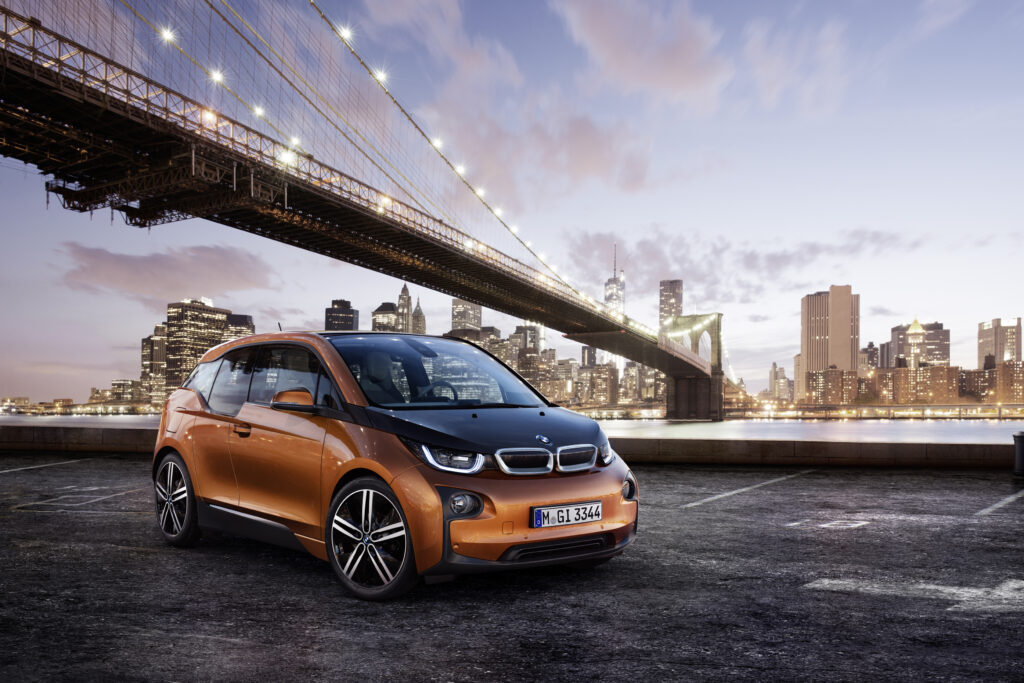
Buying a car is tricky in today’s market, and even leasing can feel like three-dimensional chess these days. Although 2022 isn’t the best time in history to buy or lease a car, some shoppers don’t have a choice. It doesn’t help that the average new car payment is a bank-draining $650 a month in 2022. Fortunately, leasing provides a window of opportunity for those who don’t mind what is essentially a long-term rental. These are the best car lease deals in 2022. All examples assume a 5% down payment at signing.
Not sure where to start? Head over to our CarEdge complete guide to leasing to find out what leasing a car is, and when it’s a good idea.
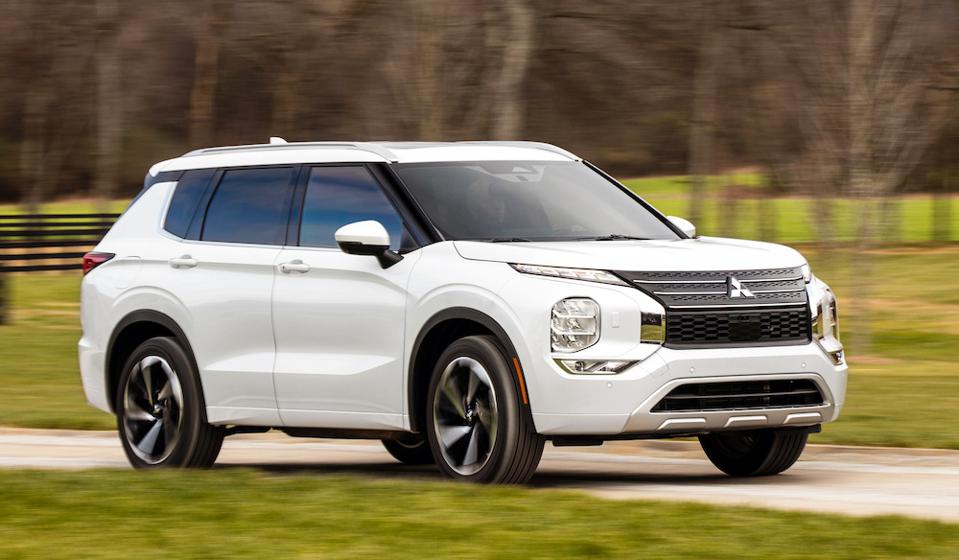
The plug-in hybrid (PHEV) version of the Mitsubishi Outlander sells for an average MSRP of $40,356 depending on the trim. If leasing is an option, you can get into this versatile SUV for $412 per month with an allowance of 12,000 miles a year. How does a plug-in hybrid work? The Outlander can drive 24 miles on pure electricity (which is much cheaper than gas), and then can drive another 300 miles as a regular hybrid system with the help of a combustion engine. It’s kind of the best of both worlds, especially for a lease.
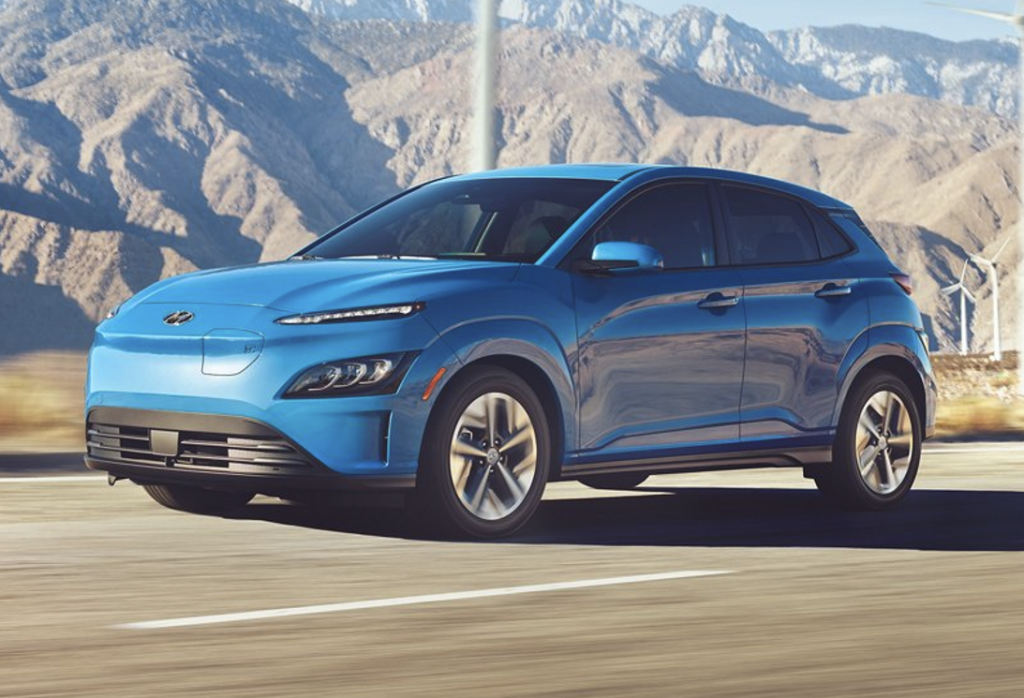
The Kona EV made our CarEdge list of the five best electric cars you can get for under $50,000. The Hyundai Kona EV has an average MSRP of about $40,000, and you can lease one for just $401 a month. The Kona is a great alternative for those considering the Chevy Bolt. Plus, it comes with Hyundai’s unbeatable 10 year, 100,000 mile battery and electric powertrain warranty. This front-wheel drive subcompact crossover gets 258 miles on the charge, exceptional range for a budget EV. Some owners get over 275 miles on a single charge.
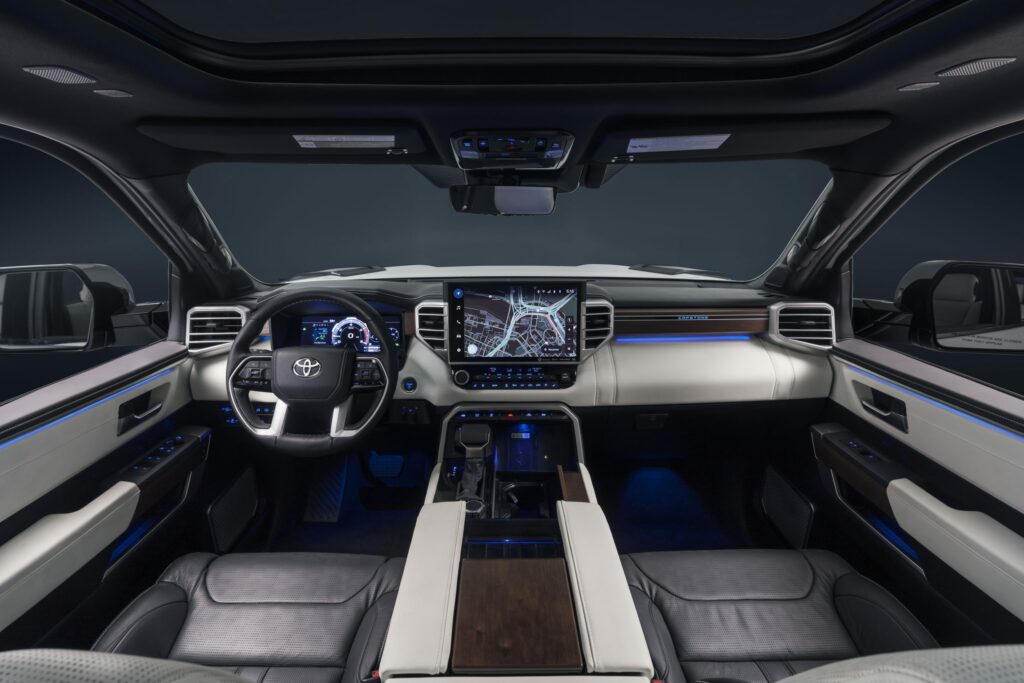
If you can find one that’s not marked up, the 2022 Toyota Tundra 4WD is $51,400 at MSRP. If you’re open to leasing, you can sign up for $525 a month for 36 months and 36,000 miles. That’s $125 less per month than today’s average monthly finance payment. The downside? The Tacoma gets 14 miles per gallon when gas prices are well over $4 per gallon.
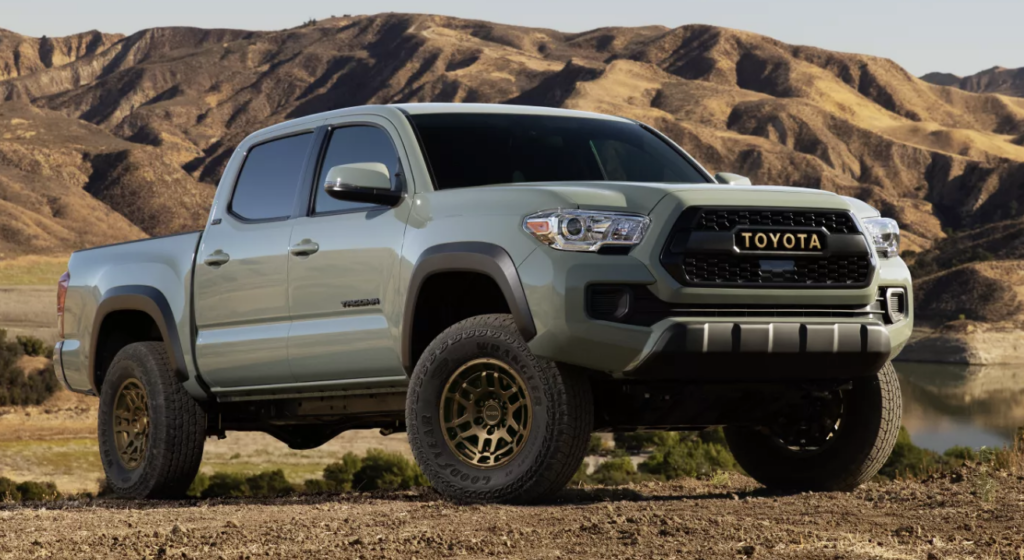
Last year, the Toyota Tacoma won Best Buy of the Year award from Kelly Blue Book in the mid-size truck category, and now you can lease a 2022 model for under $400 a month. If you buy, the 2022 Tacoma has an average MSRP of $36,300. If you lease, monthly payments are as low as $361.
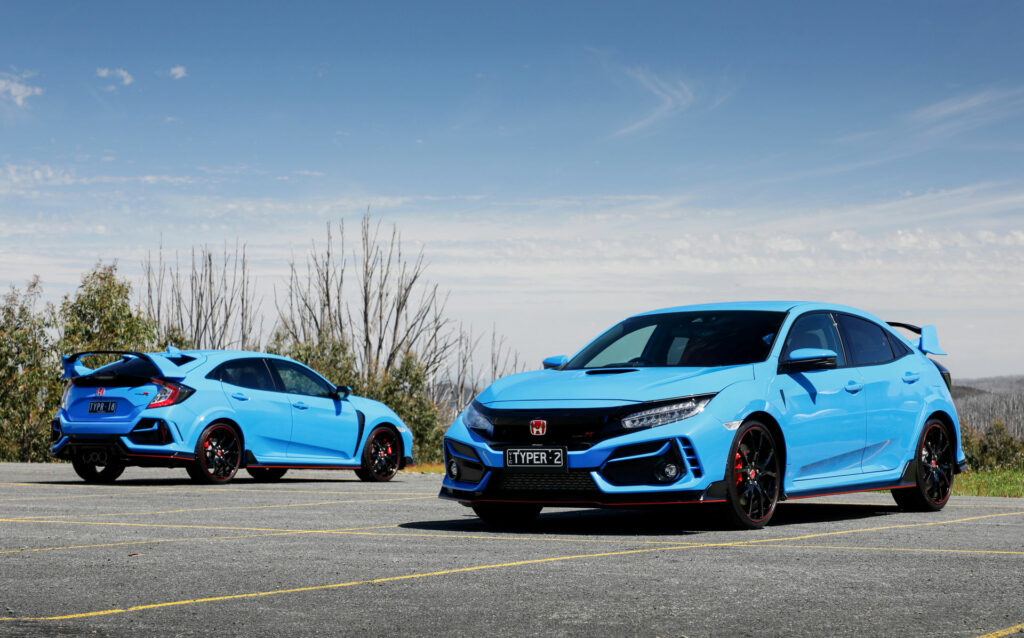
With an MSRP of $41,900, it’s a pleasant surprise that you can get into a Civic Type R lease for just $410 a month. Over 300 horsepower propels this budget racer to 60 mph in just 5.3 seconds. The challenge is finding one on a dealer lot.
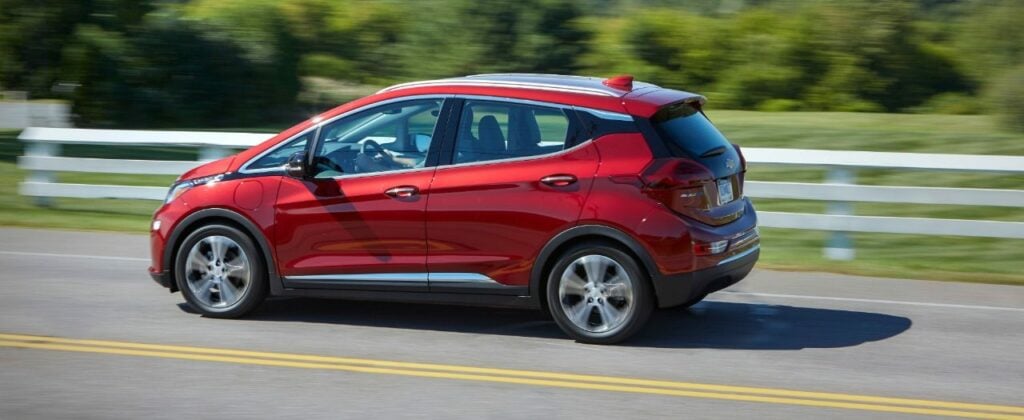
Pre-facelift, the 2021 Chevy Bolt was the least ‘sexy’ electric vehicle on the market. It may look bland, have slow charging, and be subject to one of the most scrutinized recalls in recent memory, but you can lease one for cheap. The 2021 Chevrolet Bolt sells for $38,567 (average MSRP across trim levels), but you can lease one for $367.63 a month. Just make sure that you have proof from the dealer that your Bolt has already had the recall fix. Learn more about the Chevy Bolt recall and vehicle specs here.

The 2022 model year gets a refreshed, modernized front fascia and improved interior. Sadly, driving range figures for the 2022 year remain the same. At least it doesn’t look like a cheap appliance anymore. Here’s the great news: the 2022 Chevrolet Bolt has a lower MSRP than the 2021 model. GM electric vehicles no longer qualify for the federal EV tax credit, so GM must have felt compelled to keep pricing competitive. Whether you go for a 2021 or 2022 Bolt, ensure that the car has had all of the mandatory fire-related recall fixes completed.
You can lease a 2022 Chevy Bolt for $312 a month for 36 months. If you’re considering buying, remember that the $33,595 price tag will not get any help from the federal tax credit. State and local incentives may apply, depending on where you live. Here’s everything you need to know about the 2022 Chevrolet Bolt.
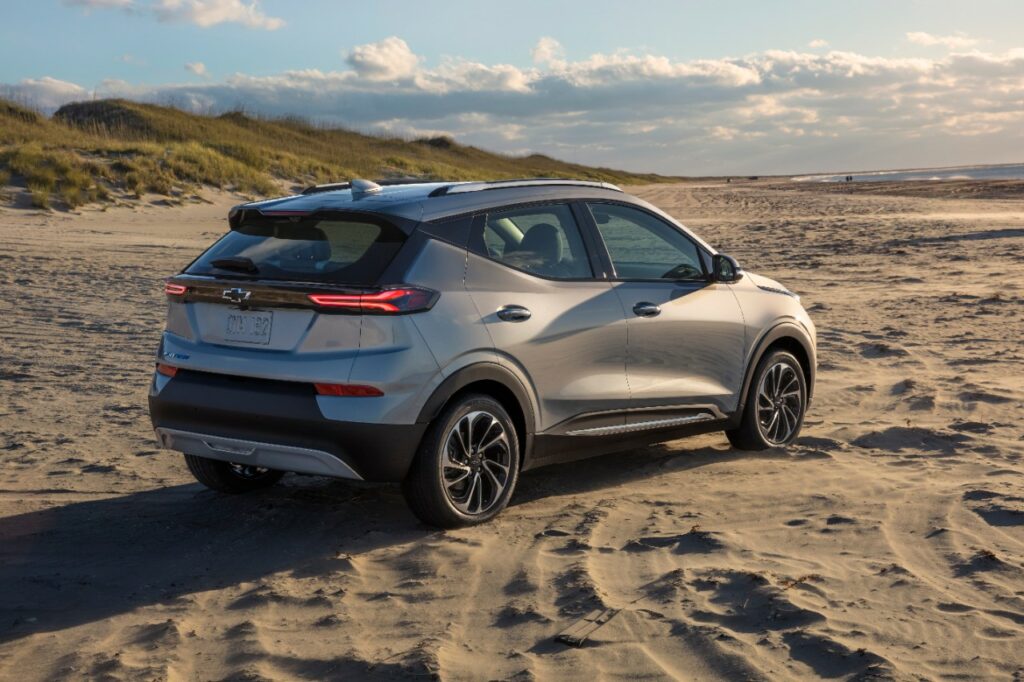
The Bolt EUV is the slightly larger new sibling to the regular Chevy Bolt EV. The EUV sells for $36,245, but you can lease one for just $341 per month. Range is 247 miles, but charging isn’t that great. Learn more about the Bolt here.
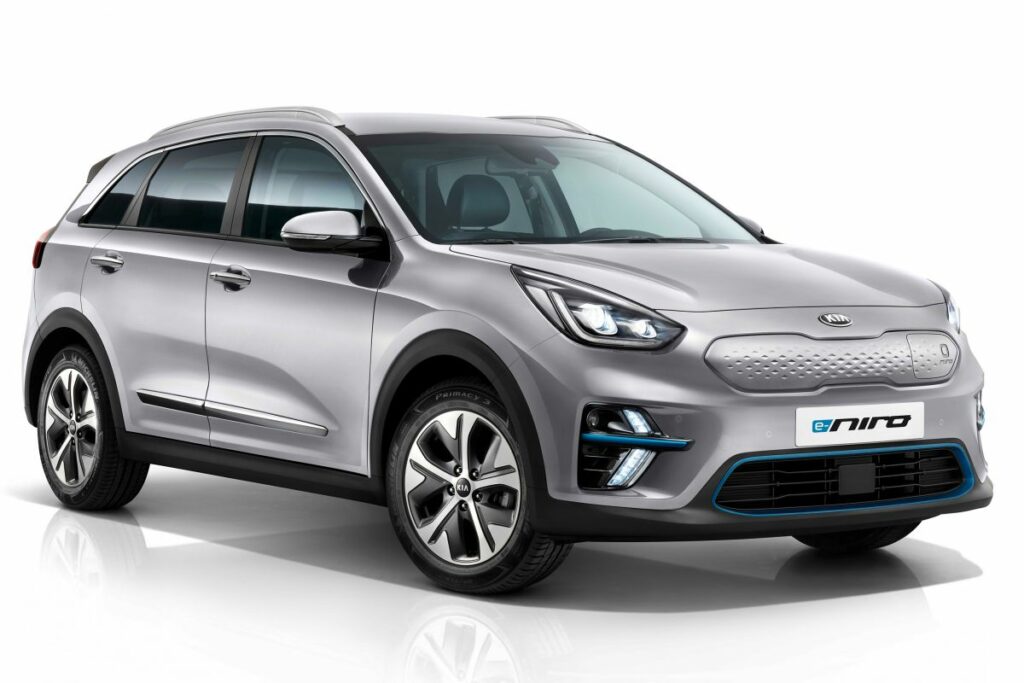
The 2022 Kia Niro EV has an average MSRP of $43,500, but it can be all yours (for 36 months) for just $395 with a lease. There’s generous lease support for the Niro for a few reasons. The Kia Niro is about to receive a major upgrade in 2022, and it’s being overshadowed by the new Kia EV6 electric crossover. The Niro can make it 239 miles on a charge, and charging from 0-80% takes about one hour at a DC fast charger. However, if you plug it in at home, it should work just fine for those who drive less than 50 miles a day.
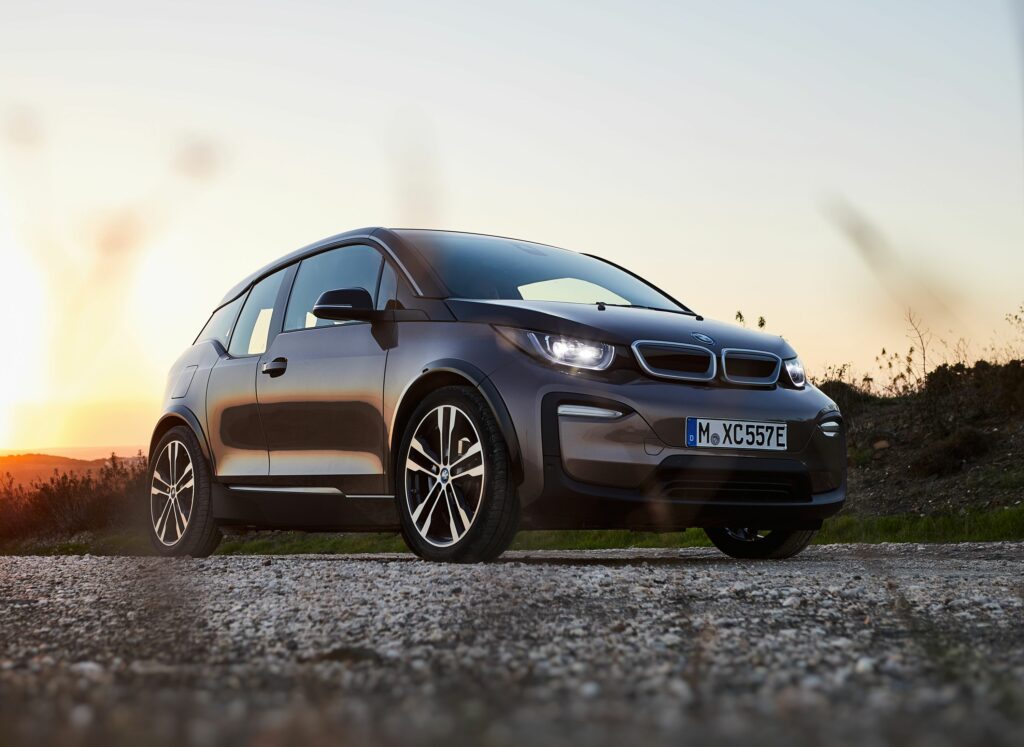
Why is the 2021 BMW i3 such a phenomenal deal in 2022? It was recently discontinued, but it’s still a great option if you’re looking for an affordable, low-emissions way to get around town. Keep in mind that it’s no Tesla. The i3 gets 200 miles of range, 153 of which are on pure electricity. Not to be confused with the new BMW iX3, the 2021 i3 has an optional range extender (on the BMW i3 REX version). All trims considered, the 2021 BMW i3 has an average MSRP of $48,970 while supplies last.
If you’re looking for an all or mostly-electric bargain lease, you can lease the 2021 BMW i3 for $425/month. That’s well under the budget-friendly 10% threshold for a smart lease.
Have questions or comments about the best car lease deals in 2022? Or maybe you’d simply love to connect with fellow car buyers and auto enthusiasts? Check out the CarEdge Community at caredge.kinsta.cloud!
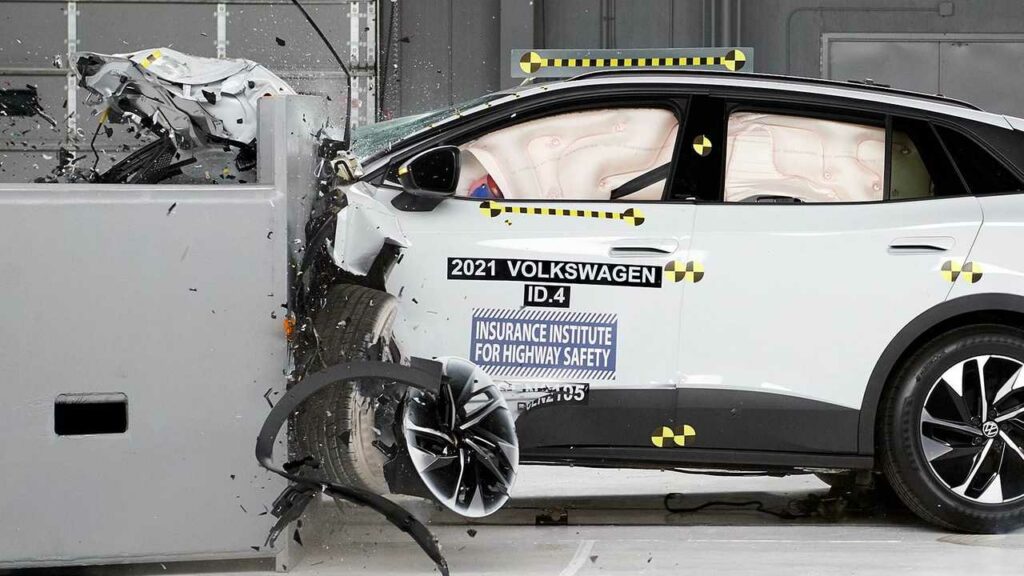
Update 3/8/22: As the Ukraine crisis continues, automakers continue to see impacts. The possibility of a looming raw material shortages is beginning to weigh on semiconductor chip production forecasts, with the real possibility of an even worse chip shortage on the horizon. Metals used in everything from vehicle frames to catalytic converters are soaring to record prices due to the importance of Russia in the global supply. More on the latest developments below.
The ongoing crisis in Eastern Europe is affecting global automakers more than expected. As the conflict drags on into March, automotive suppliers in Russia and Ukraine are experiencing severe disruptions. Logistical nightmares are tumbling out of control as airspace restrictions are enforced. Now, cyberattacks are adding insult to injury. Here’s every automaker impacted by the conflict in Ukraine.
Transport between Europe and countries home to Asian auto manufacturers is facing unprecedented disruption as air space restrictions over Eastern Europe halt 20% of the world’s air cargo. In retaliation to bans imposed on Russia, Russia has reciprocated by banning European carriers from entering Russian airspace, which stretches 5,600 miles from Europe to East Asia. There have also been reports of Russian-based cargo ships being refused refueling at various ports in protest to the invasion of Ukraine.
Furthermore, automotive parts manufacturers located in Ukraine are shuttered, and those in Russia are subject to the effects of sanctions.
Raw materials used in the manufacturing of vehicle frames and electric vehicle batteries are soaring to record highs. Aluminum, palladium, platinum and nickel are most immediately impacted by the Ukraine-Russia conflict. About 40% of the world’s palladium is sourced from Russia. Palladium is used in catalytic converter production. Automotive News reports that auto industry suppliers are well aware of the impending impacts on manufacturing.
“When it comes to metals, Russia companies are major suppliers to Germany. In 2020, they accounted for 44 percent of Germany’s nickel imports, 41 percent of its titanium, a third of its iron, and 18 percent of its palladium.
With production of 108 million tons last year, Russia is the world’s fifth-largest producer of iron ore, according to Credit Suisse, supplying European steelmakers who now face higher prices and possible difficulties procuring the metal.”
Palladium now sits at $3,440 an ounce, 60% above where it was two months ago. Automotive-grade aluminum also hit a record high on March 7. Nickel is at a 15-year high.
Neptune Global chief executive Chris Blasi said that someone will bear the brunt of the record prices and shortage. “There is no other option beyond palladium and platinum for catalytic converters, and you cannot build a car without a catalytic converter,” Blasi said.
Around 70% of the neon used by automotive industry suppliers is sourced from raw materials in Ukraine. Neon is used in the lasers that are critical to the production of semiconductor chips. The ongoing chip shortage may become even worse if the Russia conflict extends beyond a few months. For now, chip makers are relying on existing supplies. Automotive News detailed the neon supply concerns to keep an eye on here.
Although many policy and conflict experts expected worse by now, cyberattacks have disrupted automakers in the past week, causing some plants to briefly close. The automakers themselves are not the only ones at risk. Suppliers critical to the vast automotive supply chain have been hit with cyberattacks, and the result has been felt in recent days.
Volkswagen Group, the parent company of Audi, sources a large portion of its wire harnesses from a Ukrainian supplier. Audi announced production cuts that result from these supply chain difficulties. VW Group brands are among the many who have stopped exports to the Russian market.
The critical wire harnesses that BMW uses for its vehicle production are sourced from suppliers in Western Ukraine. The closure of the suppliers and the associated supply chain bottlenecks have now caused production cuts at BMW’s German plants. BMW also halted production at a factory in Kaliningrad, a Russian exclave situated between Poland and Lithuania. BMW has also suspended vehicle exports to the country.
On March 2, Ford announced a production stop at the Ford Sollers production facility, in which it maintains a 50% stake in partnership with Russian automaker Sollers.
Ford has a 50% stake in three Russian automotive plants. Ford Sollers is the Russian joint venture between Sollers of Russia and Ford. Most of the production at Ford Sollers is for the Ford Transit and similar commercial vehicles. A company spokesperson said that employee safety is their priority, and that effects of sanctions and supply chain disruptions are being assessed.
GM says they are fortunate to have limited supply chain risks as a result of the Ukraine conflict. Still, they are stopping exports to Russia. The move is unlikely to have major impacts for GM, as they sell less than 3,000 vehicles in Russia annually. GM ended production in Russia seven years ago.
On March 2, Honda joined other automakers in pausing sales and exports to Russia. Volvo was the first to make the move.
Interfax News reported that a Russian Hyundai official announced the suspension of output at its plant in St. Petersburg. On March 4, the automaker cited supply issues in its decision to prolong the plant closure. Hyundai is a major force in Russia, selling over 10,000 vehicles per month on average (12% market share).
The UK automaker announced that it is ceasing shipments of vehicles to Russia, effective immediately. Last year, Jaguar Land Rover sold 6,900 vehicles in Russia. A spokesperson said Jaguar Land Rover’s priority was “the wellbeing of our entire workforce and their families, as well as those within our extended network”. The statement went on to cite global supply chains and sanctions. “The current global context also presents us with trading challenges, so we are pausing the delivery of vehicles into the Russian market and continually monitoring the situation on behalf of our global customer base.”
Global auto manufacturer Magna announced the closure of its six Russian plants on March 7, citing “the unfortunate situation in Ukraine.” Magna Spokeswoman Tracy Fuerst shared the company’s support for the Ukrainian people. “Although we don’t have facilities in Ukraine, we have the privilege of working with thousands of Ukrainian colleagues in our Magna operations around the world as well as those from Russia who share the same values of human rights, diversity and inclusion,” Fuerst said. The Canada-based automotive supplier builds parts and entire vehicles for brands ranging from Toyota to Mercedes-Benz.
Mercedes-Benz sources multiple components from suppliers in Ukraine. Mercedes-Benz will reduce production at some European plants this week due to supply shortages. Mercedes sources many components from suppliers in Ukraine. Production shifts will see cuts, but the automaker does not expect to fully stop production outside of Russia. Mercedes is halting production at its Russian plant and pausing the export of passenger cars and vans to the country. They cite sanctions as the cause of the move.
Following Volvo’s lead, Mitsubishi announced that it will halt production and sales of their vehicles in Russia, effective March 1st. Mitsubishi has 2.2% market share in Russia.
Stellantis established a task force to identify disruptions from the ongoing conflict. Stellantis CEO Carlos Tavares said that the automaker has 71 employees in Ukraine. They are ensuring compliance with the rapidly-evolving sanctions in place.
Stellantis, the result of a merger between Fiat Chrysler and Peugeot, produces and sells the Peugeot, Citroёn, Opel, Jeep, Fiat brands in Russia. In January, Stellantis announced that they will begin exporting Russian-made commercial vehicles to Western Europe. The latest developments will likely put a hold on their plans. In 2021, Stellantis brands had just 1% market share in Russia.
On March 2, Toyota announced an indefinite pause in production at its Russian factory. Toyota produces about 80,000 vehicles at its St. Petersburg plant. They are also pausing imports into Russia.
All 14 domestic factories were closed on February 28 after critical supplier Kojima was taken down by a cyberattack that included a threatening message. The supplier was hit with a virus soon after Japan’s government announced support for Ukraine.
Toyota announced that it would resume production at all facilities in Japan the following day. Kojima was unable to operate, and Toyota said they do not stockpile the parts made by the supplier. Toyota relies on 60,000 suppliers, an immense vulnerability that Toyota is surely rethinking.
Volkswagen Group, which includes Audi, Bentley, Cupra, Porsche, Lamborghini, Skoda, SEAT and Volkswagen, continues to face supply chain constraints. VW branded vehicles are produced using wire harnesses sourced in Ukraine. As reserve supplies run low, more production cuts are possible. Production of Volkswagen’s electric vehicles is halted because of supply chain disruptions. The Volkswagen ID.4, ID.3 and new ID.5 electric vehicles are especially affected.
On Thursday March 3, Volkswagen said it is suspending its Russian business until further notice. No cars from VW Group brands will be exported to Russia. VW delivered 216,000 cars in Russia in 2021, about 2.4% of Volkswagen Group’s global vehicle sales.
As supply chain vulnerabilities surface, VW says it will idle the massive Wolfsburg plant. The VW Zwickau and Dresden plants are also closed for the week. Prior to the Ukraine-Russia disruptions, there was already a 6-12 month wait for buyers ordering a Volkswagen ID.4 in North America.
On February 28, Volvo became the first automaker to cease shipments of new vehicles to Russia. The Swedish automaker (owned by Geeley of China) cited their desire to avoid possible conflicts with the rapidly changing sanctions being imposed on Russia by the European Union, United States, and allies. Volvo sold 9,000 cars in Russia in 2021.
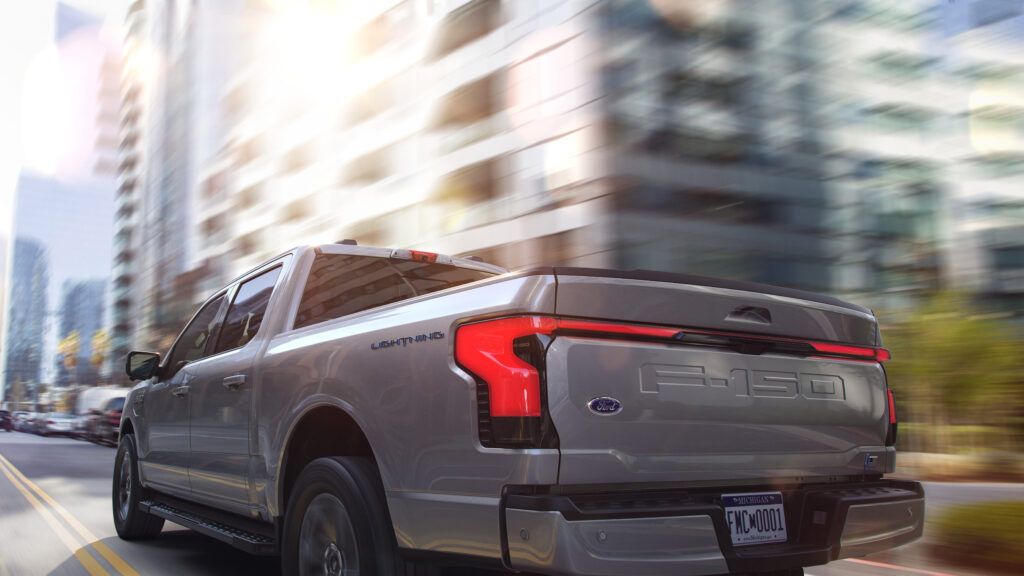
The Russia-Ukraine conflict adds a new dimension to the production delays and supply chain disruptions that have been dragging on for well over a year. The latest chip shortage forecasts show a delayed recovery, despite earlier optimism. So far in 2022, AutoForecast Solutions has increased their projection of vehicles lost in production due to the chip shortage by 63%, from 767,700 to 1,253,100.
Severe sanctions on Russia and instability in Ukraine may persist far longer than originally expected. Now that cyber security vulnerabilities are being targeted, sporadic production halts are becoming the new normal. Automakers impacted by the Ukraine conflict are in for prolonged uncertainty. Automakers may be entering a period of disruption being the new normal, even as the chip shortage will eventually wind down.

What do these five cars have in common? They stink for one reason or another. Transportation is the second biggest purchase most people will ever make, so it’s important to get it right. With the automotive market at all-time highs, it wouldn’t be a good time to have buyers remorse. Here are five cars to avoid in 2022, and why you should steer clear of them.

Right now, the socially-distancing Chevrolet Bolt is up a shocking 42% since a year ago. Why do so many people want to buy a rolling fire hazard? Dealerships aren’t even allowed to sell Bolts until they work through the backlog of recall fixes. The stop-sale may come to an end soon, but does that mean you should buy one? With the lowest charging speeds on the market and a damaged reputation, don’t buy a Bolt. Plus, it’s likely to be discontinued! GM doesn’t mention the Bolt in their future roadmaps for electrification. If you really want an affordable electric vehicle from GM, CEO Mary Barra is touting the Chevrolet Equinox EV just around the corner. Do you know how long it takes to charge a Chevy Bolt to full at a public fast charger like Electrify America? An hour and 20 minutes. So many EVs on the market today charge up in half that time. Please don’t buy a Bolt!
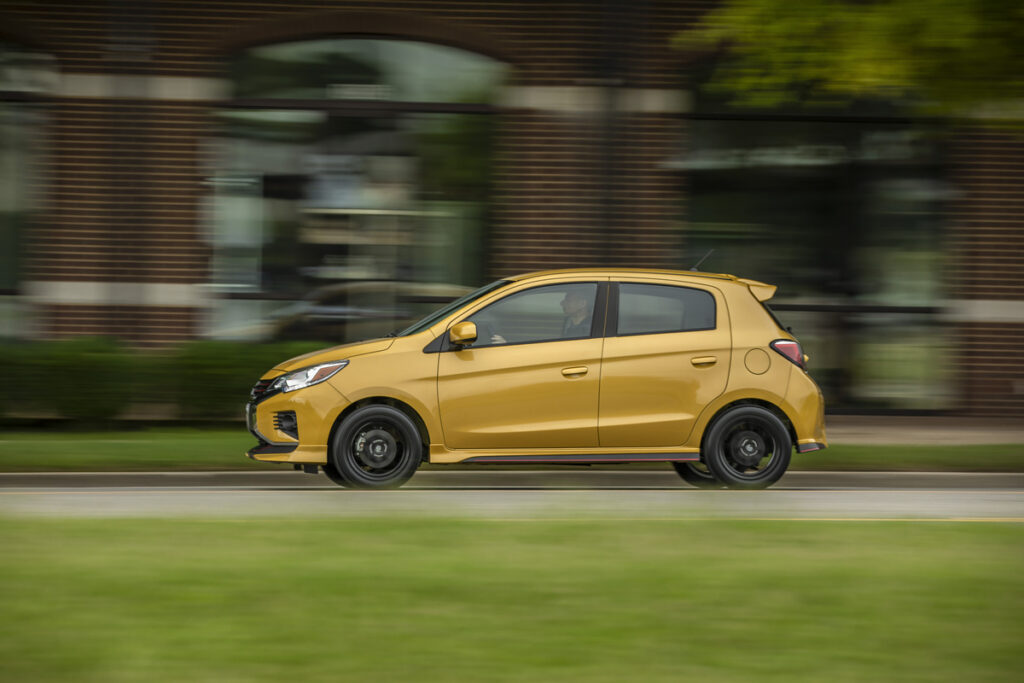
The world needs more affordable cars, but the Mitsubishi Mirage has appreciated way too much to justify the purchase. This sub-compact car has appreciated over 52% on the used vehicle market since 2020. The average used Mirage sells for $14,404, which is amazing considering a new one costs $14,600. The Mirage has some of the worst performance and comfort ratings in existence. It’s noted for ‘seats that feel more like cloth-covered chairs’ as Edmunds put it. Car and Driver gave in 2.5 stars out of TEN. It’s always best to buy and hold, rather than taking a big hit on depreciation after driving off the lot. Is the Mitsubishi Mirage a car you’d want to keep for a decade? probably not.
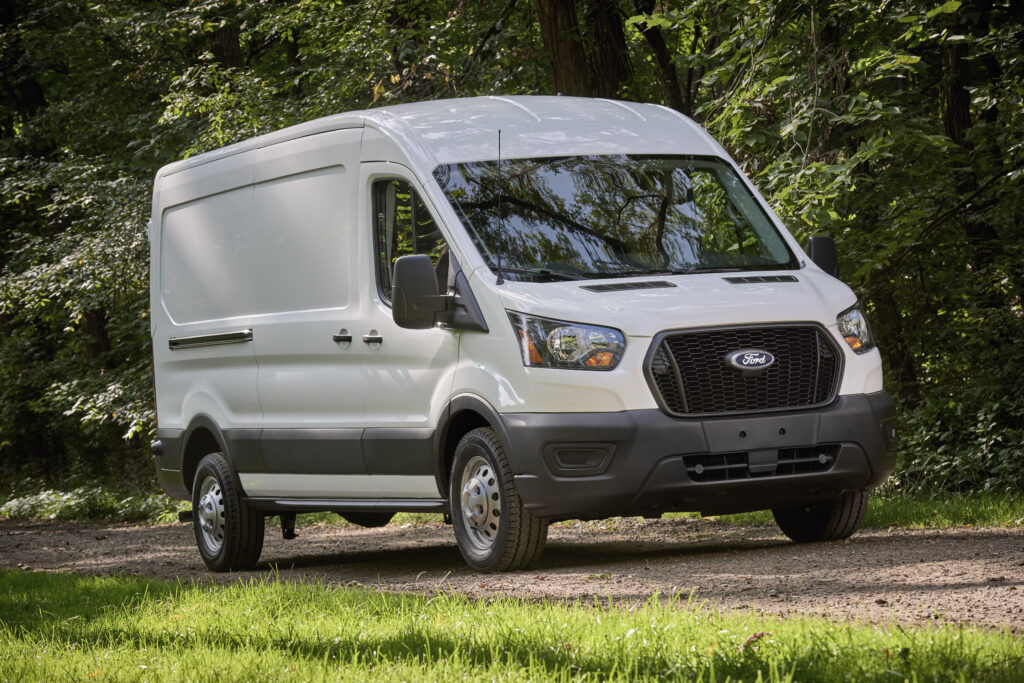
Now is not the time to buy a van. Full-sized vans have appreciated by 55% this past year, and minivans have jumped 42%. While the Ford Transit starts at an MSRP around $35,000, most dealers are asking over $48,000 for the base trim. The Transit is a solid van with great utility, but there’s no way its long term value will reflect the current price. That could be said about most cars on the market now, but 55% appreciation is through the roof. You’re buying a van, not a house.

Sometimes, a vehicle is too popular. If you are determined to get yourself into a Hyundai Santa Fe in 2022, expect it to come at a substantial cost. Year-over-year, prices for the Santa Fe are up 48%! On top of unattractive prices, the Santa Fe is involved in a major recall affecting half a million cars. While most consumers are happy with their Hyundai SUVs, Consumer Reports recently stopped recommending the Santa Fe due to poor reliability. Once the chip shortage ends, resale values will drop. Don’t get stuck with a vehicle you paid 48% appreciation for!
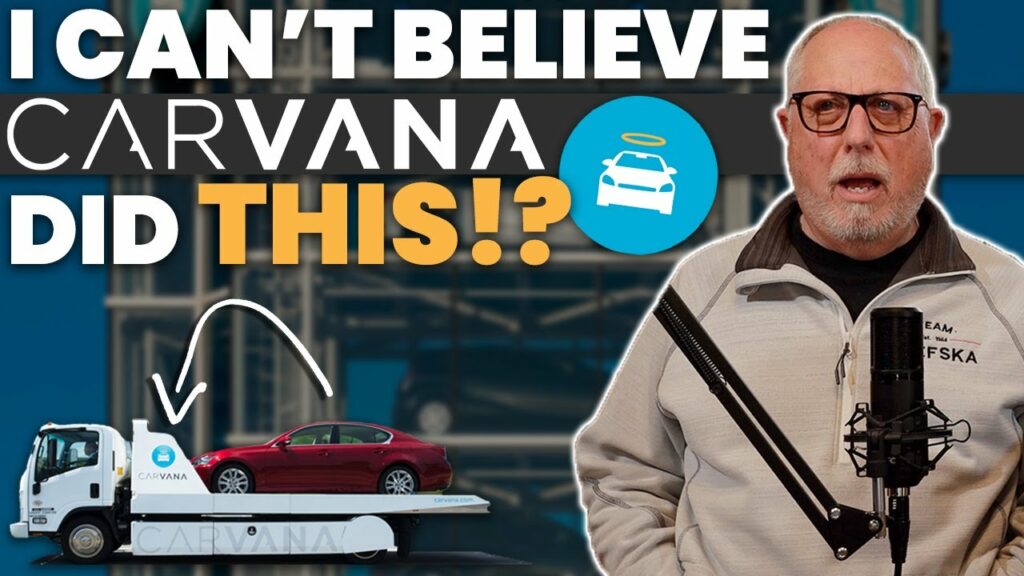
No pre-purchase inspection? Not okay! Want to buy a used car with fast food still in the back seat? Want to make sure you DON’T get your title anytime soon? I don’t think you do. Selling to Carvana or Vroom might make you a pretty penny, but buying from Carvana could be a disaster. The ongoing Carvana lawsuit makes for an uncertain future for Carvana. It’s best to stay out of that mess and take your money elsewhere, at least for the time being. In today’s world, a pre-purchase inspection is a must-have for any used vehicle. Sure, there may be a 7-day return period, but it’s a huge pain to undo a big-money transaction like buying a car. Don’t do it!
These are cars to avoid in 2022 if your goal is to make a purchase you won’t regret. What about the five cars to buy in 2022? Here’s our list of the top buys in the market right now.